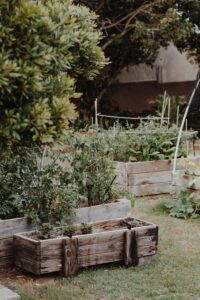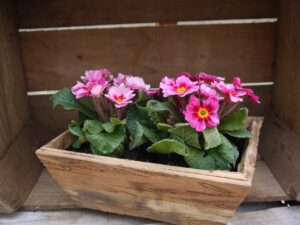Proper drainage plays a crucial role in the success of planter boxes. Without effective drainage, plants risk drowning due to waterlogged soil, leading to root rot and stunted growth. In this article, we will explore the significance of ensuring proper drainage in planter boxes, discuss the potential consequences of inadequate drainage, and offer practical tips on how to achieve optimal drainage for thriving plants.
Importance of Proper Drainage in Planter Boxes
Planter boxes are a popular choice for gardening enthusiasts, as they allow us to create beautiful and vibrant displays of plants, flowers, and herbs. However, for these plantings to thrive, it is crucial to prioritize the proper drainage in planter boxes. This article will explore why adequate drainage is of utmost importance in planter boxes and its benefits.
Prevents waterlogged soil
Understanding waterlogged soil is essential to grasp the significance of proper drainage in planter boxes. When soil becomes soggy, it is saturated with water, leaving no room for air. This restricts the oxygen supply to the roots, leading to suffocation and reduced plant growth. Additionally, waterlogged soil can become compacted, hindering root development.
The consequences of waterlogged soil are dire. Without proper drainage, excess water accumulates in the planter box, increasing the risk of drowning the roots. This can result in rotting and eventual death of the plants. To prevent waterlogged soil, it is crucial to have an efficient drainage system in place.
Promotes root health
Healthy roots are the foundation for thriving plants. They are responsible for nutrient uptake, water absorption, and anchoring the plant securely in the soil. Proper drainage plays a vital role in supporting root health in planter boxes.
When a planter box has adequate drainage, excess water is quickly and efficiently drained away. This allows the roots to access the water they need while eliminating any excess water, preventing waterlogging. Improved root health translates to healthier and more resilient plants.
On the other hand, poor drainage can have detrimental effects on roots. When water accumulates in the planter box, the roots become susceptible to diseases and rot. This weakens the roots’ ability to support the plant, leading to stunted growth and overall plant decline.
Prevents root rot
Root rot is a common problem associated with waterlogged soil. It occurs when a plant’s roots start to decay due to insufficient oxygen and excess moisture. In planter boxes, where water drainage may be restricted, root rot can become a significant issue if proper measures are not taken.
When the roots are constantly exposed to excess moisture, they become vulnerable to fungal and bacterial infections, leading to root rot. This can spread rapidly, affecting the entire plant and eventually causing its demise. Adequate drainage is essential to avoid root rot and ensure the longevity of plants in planter boxes.
Prevents nutrient leaching
Proper drainage prevents waterlogging and plays a crucial role in avoiding nutrient leaching. Nutrient leaching occurs when water drains through the soil, carrying away essential nutrients. This can deplete the soil’s nutrients and negatively affect plant growth and productivity.
When there is inadequate drainage, water accumulates in the planter box, washing away valuable nutrients as it seeps through the soil. This can lead to nutrient deficiencies, resulting in weak and undernourished plants. By ensuring proper drainage, we can minimize nutrient leaching and provide plants with a steady supply of essential nutrients.
Prevents pests and diseases
Poor drainage in planter boxes creates a favorable environment for pests and diseases. Excess moisture attracts insects like fungus gnats and aphids, causing infestations that can damage plants. Additionally, waterlogged soil creates a breeding ground for harmful pathogens, such as root rot-causing fungi and bacteria.
Implementing proper drainage in planter boxes can effectively reduce the risk of pest infestations and disease outbreaks. Well-drained soil discourages pests from laying eggs and thriving, preventing harmful pathogens from growing and multiplying.
Increases plant growth and productivity
Proper drainage directly contributes to increased plant growth and productivity. When excess water is promptly drained from the planter box, the roots can access sufficient oxygen, allowing them to respire and efficiently carry out metabolic processes. This encourages robust root development and enhances the plant’s overall growth.
By providing plants with the optimal growing conditions, including proper drainage, we enable them to reach their full potential in size and yield. Inadequate drainage restricts root growth and negatively impacts plant productivity, leading to smaller, weaker plants with reduced yields.
Improves overall plant health
The link between proper drainage and overall plant health is significant. When planter boxes have adequate drainage systems, excess water is removed, preventing waterlogging and the associated problems. This promotes optimal plant health, ensuring they receive nutrients and water without suffocating the roots.
Adequate drainage supports the development of healthy roots, allowing the plants to establish strong foundations. By promoting root health, proper drainage enhances the absorption of nutrients, resulting in more vigorous growth and improved resistance to pests and diseases. Ultimately, it contributes to the overall vitality and longevity of the plants.
Prevents planter box deterioration
Planter boxes are not immune to the effects of poor drainage. Excess water can accumulate without proper drainage within the planter box, leading to deterioration over time. The constant presence of moisture can promote the growth of mold, moss, and algae, causing unsightly stains and potentially damaging the structure of the planter box.
Furthermore, constant exposure to moisture can weaken the materials of the planter box, especially if they are made of wood or metal. Rotting, rusting, and warping are potential consequences of inadequate drainage. By ensuring efficient drainage, we can preserve the quality and longevity of the planter box.
Enhances aesthetic appeal
Proper drainage enhances the aesthetic appeal of planter boxes in addition to its practical benefits. Excess water pooling on the surface or seeping out from the sides can detract from the visual appeal of the plantings. By providing adequate drainage, we can maintain a neat appearance, allowing the focus to remain on the beautiful, flourishing plants.
Ensures the long-term success of plants
Ultimately, the key to long-term success in planter boxes lies in providing the best possible growing conditions for the plants. Proper drainage is an essential factor in achieving this. By implementing efficient drainage systems, we create an environment that supports healthy root development, prevents waterlogging, and minimizes the risks of pests and diseases.
For plants to thrive and reach their full potential, we must prioritize their well-being. Adequate drainage ensures that planter boxes remain a conducive environment for plant growth, allowing us to enjoy beautiful, thriving displays year after year. By considering the importance of proper drainage, we lay the foundation for success and longevity in our gardening endeavors.



